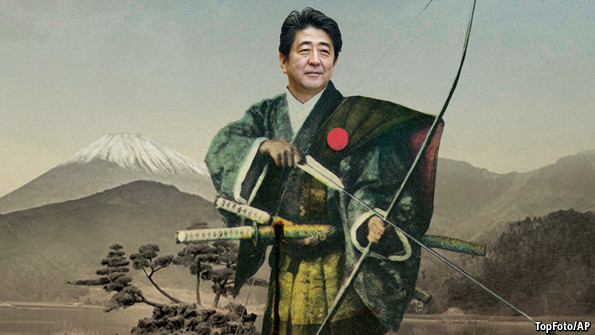【THREAD】
There& #39;s been a lot of discussion on here about a thread taking a very rosy view of Abe& #39;s legacy.
As a counterpoint, here is, with the author& #39;s permission, a recent post by Richard Katz. Full text here, and I will post below: https://japanforum.nbr.org/scripts/wa.exe?A2=LIST;696ad524.2008&S=
/1">https://japanforum.nbr.org/scripts/w...
There& #39;s been a lot of discussion on here about a thread taking a very rosy view of Abe& #39;s legacy.
As a counterpoint, here is, with the author& #39;s permission, a recent post by Richard Katz. Full text here, and I will post below: https://japanforum.nbr.org/scripts/wa.exe?A2=LIST;696ad524.2008&S=
/1">https://japanforum.nbr.org/scripts/w...
While I was never one of Shinzo Abe’s biggest fans, it is sad to see him forced off the stage because of this illness.
At this point, stories on his resignation are looking at his achievement and legacy.
/2
At this point, stories on his resignation are looking at his achievement and legacy.
/2
To my mind, it was the claims of Abenomics that led the public to support him and acquiesce to other things they didn’t like. But the reality never lived up to the advertising.
/3
/3
Let’s look at Abe’s own measure of his success. He vowed to bring Japan to 2% real annual growth on a steady basis. He never claim (sic) close.
/4
/4
When he was elected in December of 2012, the economy had just gone through almost six years of zero growth. GDP was down 1.4% from where it had been in the first quarter of 2007 before the global economic meltdown.
/5
/5
It was operating so far below full capacity use of labor and capital stock, that it was due for a spurt of relatively high growth to get back to full capacity. This came in the first five quarters of Abe’s reign—from 2012-IV to 2014-I—when GDP rose a total of 3.8%.
/6
/6
Then, Abe hiked the consumption tax and did so again in October 2019. Both hikes triggered mild recessions. Had Japan been fundamentally healthy, those would have been minor setbacks. But Abenomics did nothing to elevate Japan’s long-term potential growth rate.
/7
/7
Consequently, in the six years from 2014-I to 2020-I (before COVID effects hit), GDP grew a total of just 1.8%. So, in those *six years*, GDP grew less than the 2% Abe claimed he would achieve *each* year.
/8
/8
Personal consumption in 2020-I was 0.5% *lower* than it had been when Abe took office. Not because people are unwilling to spend, but because tax hikes and real wage cuts reduced their income. Real wages per worker were 3.5% *lower* in 2019 than in 2012.
/9
/9
The only arrow Abe took seriously was the first: monetary stimulus and Kuroda’s Peter Pan theory: if you stop believing you can fly, you’ll fall.
/11
/11
The fundamental premise of Abenomics was completely illusory: that the main obstacle to growth was lack of confidence and deflation and that conquering deflation would revive growth.
/12
/12
For one thing, the BOJ—which claimed it could hit 2% inflation in just two years—has never come close even after almost eight years.
/13
/13
This has caused a rethink among those monetary economists who believed that a central bank could achieve whatever inflation rate it wanted if it just tried hard enough.
/14
/14
From April 2015 (Fukuda’s original target for achieving 2% inflation) through June 2020, core inflation (exc. Food, energy and consumption taxes), inflation averaged a negligible 0.2%. Rhetoric aside, the BOJ has more or less dropped that 2% goal.
/15
/15
Still, 0.2% inflation is better than the -0.6% annual rate of deflation during 1999-2012. But that has done little or nothing to stimulate growth.
/16
/16
As for fiscal policy: Abe applied both the gas pedal and brake: sometimes more of one, sometimes the other. His tax hikes took money away from people.
/17
/17
On the other hand, public demand accounted for a huge 42% of all GDP during his whole reign and 80% during 2014-I to 2020-I.
/18
/18
Despite Abe’s (unfulfilled) pledge to reach a balance in the primary budget (the whole budget except for interest payments) by 2020, he had to keep spending lest the economy suffer no growth whatsoever.
/19
/19
The third arrow—productivity-enhancing structural reforms—was all rhetoric, virtually no action. It was less a policy than a sales pitch. That’s cause Abe and his economic tutors believed that all they really needed was the first arrow.
/20
/20
It’s way too soon to see how resilient the economy will be in the face of COVID. Today’s conventional wisdom is that, in Japan, as elsewhere, it will take a few years to get back to pre-COVID levels of GDP.
/21
/21
Finally, Richard tells me that Toyo Keizai online will be publishing a version of this soon.
/22 THE END
/22 THE END

 Read on Twitter
Read on Twitter



